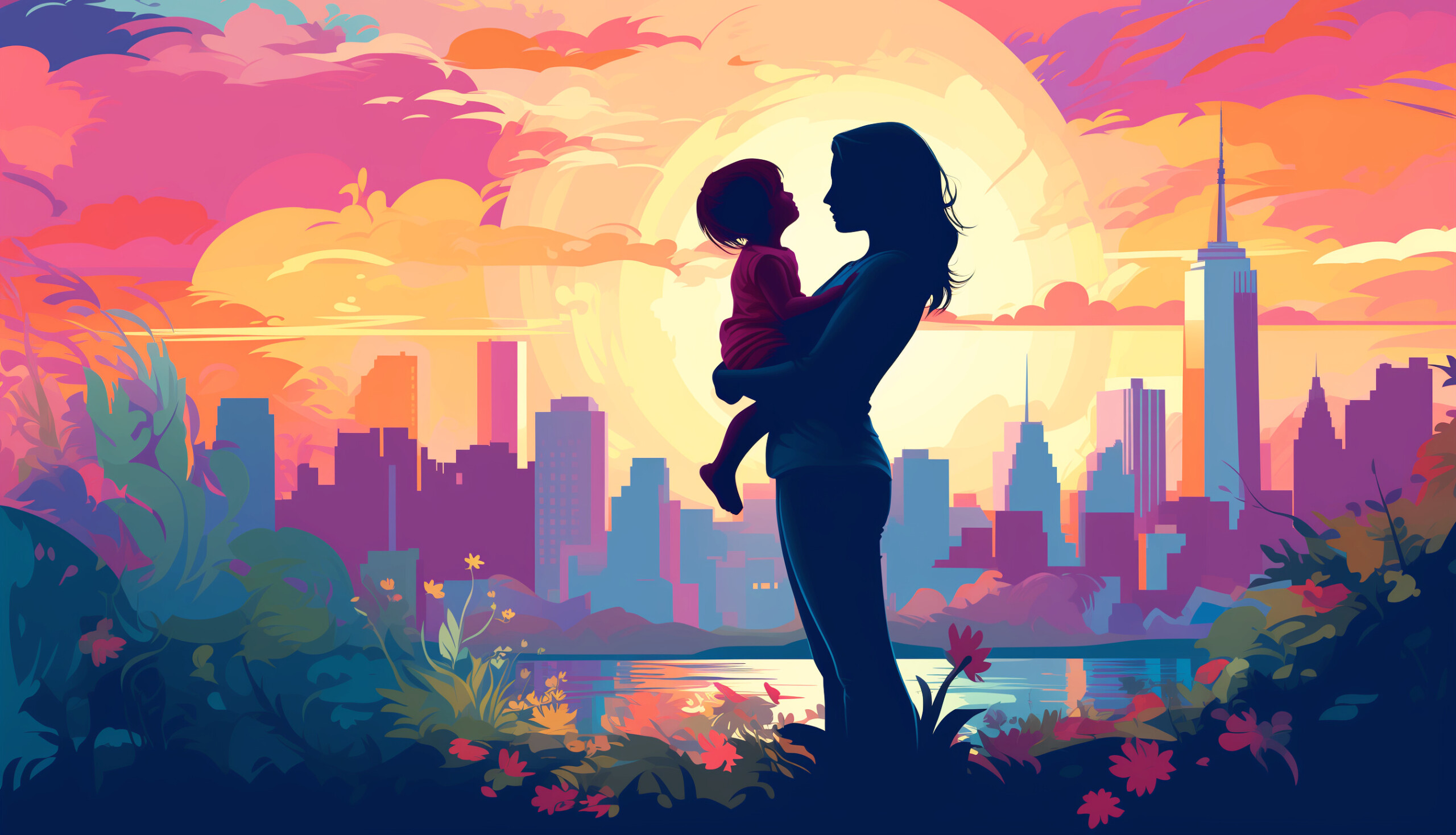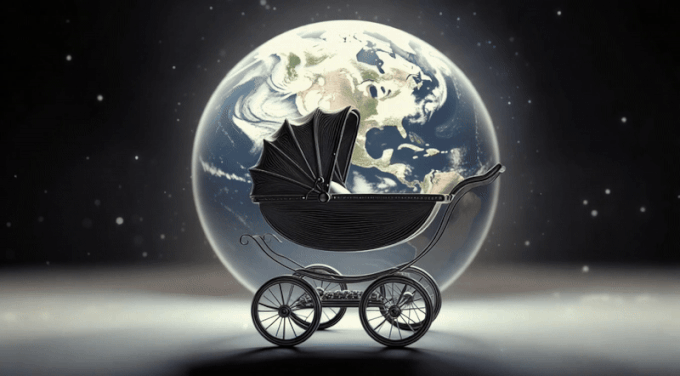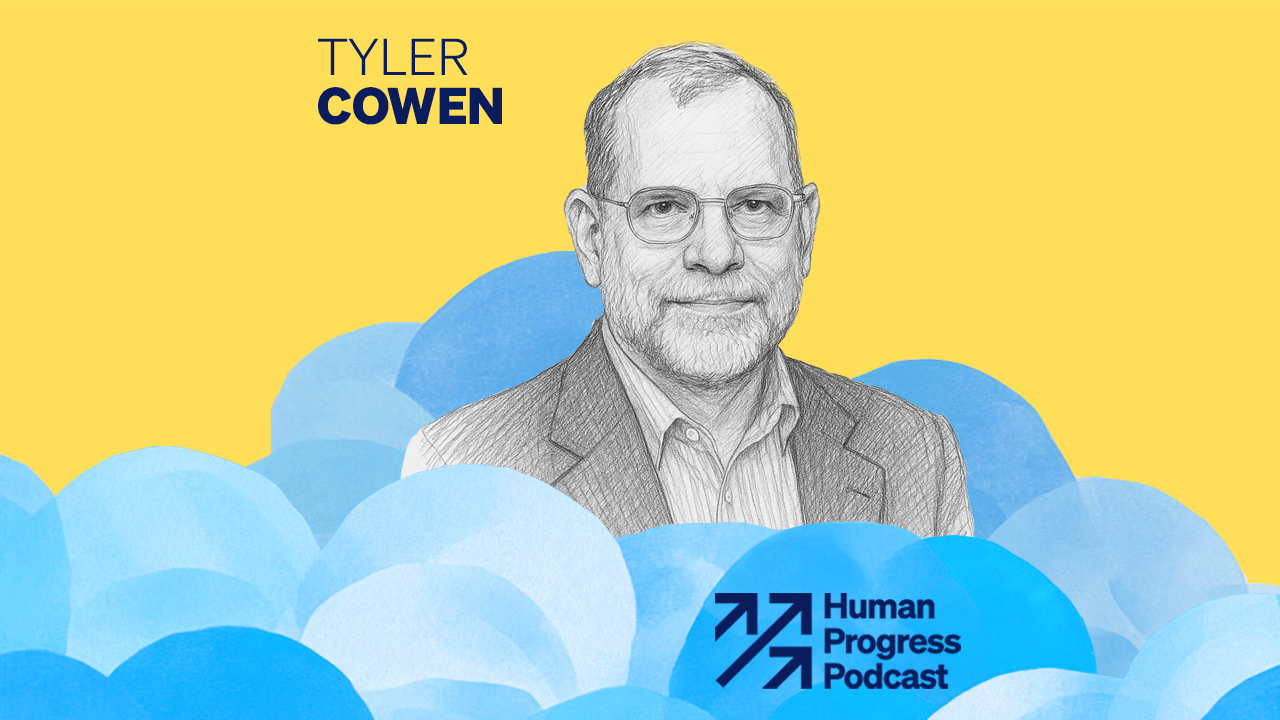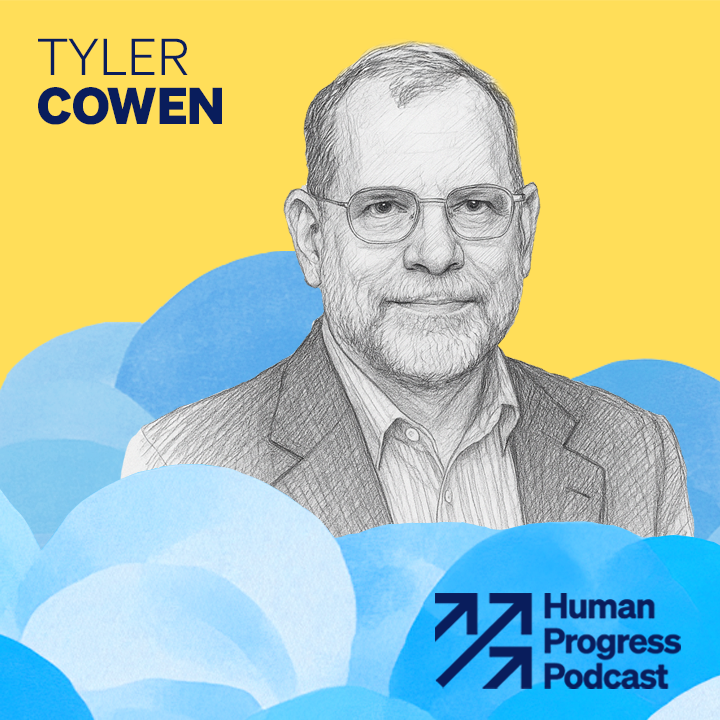Summary: Given the choice to be born in 1924, 1974, or 2024, the present moment stands out as the most promising and hopeful era, despite widespread climate anxiety. Advances in technology, healthcare, and economic development have dramatically improved living standards, making now the best time in history to begin a life.
Imagine you could choose a moment to be born, and you were offered three options: a century ago, half a century ago or right now. Let’s assume that, behind your veil of ignorance, you don’t know in advance where on Earth you’ll end up—just when. Which era would you choose? Of course, the thought experiment is not entirely fair, because we already know how the last century unfolded. But still, which year looks like the most auspicious and hopeful one in which to draw your first breath: 1924, 1974 or 2024?
If you were to ask the tens of thousands of activists that are protesting on the streets, gluing themselves to highways, blocking roads and staging die-ins, I doubt that 2024 would be the most frequently picked answer. According to the founder of environmental activist group Extinction Rebellion, climate change will lead to the “slaughter, death, and starvation of 6 billion people this century.” According to Just Stop Oil, the climate group behind many disruptive actions making news headlines, any further exploration of oil and gas will amount to “genocide” and the “starvation and the slaughter of billions,” and will “condemn humanity to oblivion.” Four in 10 Americans believe that global warming will likely lead to human extinction. Not surprisingly, a quarter of childless adults cite climate change as part of their motivation for not having children. After all, what’s the point of having children if you can’t give them a liveable future? As one young woman put it: “I feel like I can’t in good conscience bring a child into this world and force them to try and survive what may be apocalyptic conditions.”
Better than You Think
Before we consider the future of our climate, let’s get some perspective. Here’s a not unimportant consideration should you contemplate having a baby: What are its chances of dying? Fifty years ago, in 1973, the global child mortality rate was three-and-a-half times higher than today (three times, even in the U.S.), and in 1923, it was almost nine times higher. The distant past was even worse. For all of human history up until the Industrial Revolution, at least three in 10 children died before reaching their fifth birthday. In the past half-century, extreme poverty has also been slashed, for the first time in history: While nine out of 10 people were extremely poor before the Industrial Revolution, today the proportions are inverted: Fewer than one in 10 falls below the absolute poverty level. In almost every respect, the world is a much better place to be born right now than at any previous time in history.
So far, so good. But of course, all of this still leaves open the possibility that our hard-won progress will soon be swept away by catastrophic global warming. Progress is not something that is mandated by the laws of nature, and there is no guarantee that it will continue indefinitely in the future. And yet, such a catastrophe is extremely unlikely. In fact, it is doubtful whether any of our recent victories over poverty and child mortality will be lost again, let alone slide back to the levels of 1973 or 1923. The opening line of David Wallace-Wells’ “The Uninhabitable Earth,” the most-read essay in the history of New York magazine, reads as follows: “It is, I promise, worse than you think” (in his subsequent book, he ups the ante, writing that it’s “worse, much worse” than you think). However, if you’re like most people—eight in 10 consider climate change a “catastrophic risk”—the reality about global warming is in fact much better than you think. If you have consumed an unhealthy dose of doom porn about the climate, you have likely ended up with a view of the future that is much more bleak and terrifying than what is scientifically plausible. In fact, I hope to convince you that this the greatest time in human history to be born. We ought to face the future with abundant optimism—thanks to science and human ingenuity.
Predicting the Future
“It’s hard to make predictions,” quipped the physicist Niels Bohr, “especially about the future.” Scientists are studying a range of climate scenarios, with different emission scenarios and assumptions about the sensitivity of our climate to greenhouse gas emissions. These predictions are continuously honed and improved over time, as we learn more about the behavior of our climate systems and the policies and commitments of various nations.
But here’s a fact that you may never glean from reading climate doomer literature, even though it is also solidly based on the scientific consensus as documented in the successive reports by the Intergovernmental Panel on Climate Change: A temperature increase of 3 degrees Celsius—slightly more than we expect right now—will most likely reduce global GDP by only a couple of percentage points. That is not an absolute reduction compared to today, mind you, but compared to a hypothetical future without climate change: In all likelihood, our prosperity will keep growing and child mortality will keep falling, just by a bit less than in a counterfactual world without global warming.
But how can this be? Predicting the future of our global climate system is one of the most impressive scientific achievements of our time, but that by itself tells us precious little about how human societies will respond and adapt. Complicated though our climate system may be, and with all due respect to climatologists, human societies are far more complicated and less predictable. If we want to know how much damage climate change will cause—and whether it will be better or worse than you think—we should first and foremost listen not to climatologists, but to climate economists.
The main reason why climate economists expect that the negative effects of climate change will be overwhelmed by positive developments is human ingenuity. Our species has always developed smart solutions to protect us against the natural elements, populating many regions on Earth that would be “uninhabitable” without technology, but especially over the past two centuries, our mastery over nature has achieved spectacular successes. The best illustration is the one that is on every climate catastrophist’s mind: natural disasters. Despite what everyone believes and what every sensationalist news headline is telling you, global deaths per million people due to natural disasters have fallen by a factor of 100 over the past century. Mother Nature has become more violent and capricious in recent years (at least when it comes to hurricanes and floods, though not to earthquakes or volcanic eruptions), but that makes our achievement all the more impressive.
If you compare different countries and time periods, you will find time and again that the very best protection against natural disasters—whether caused by global warming or not—is economic growth and development. Material and economic progress is what allows us to build dikes, sturdy houses, hospitals and hurricane shelters, install air-conditioning and tsunami alarms and build infrastructure for early warning and evacuation.
On the remaining occasions when the news reports a flood or hurricane that has caused tens of thousands of casualties, the explanation is almost always poverty and, thus, lack of resilience. For rich and resilient countries, a heat wave or hurricane is usually little more than an inconvenience or manageable nuisance at worst, but for poor countries it can mean starvation, homelessness and death on a massive scale. In 2010, a 7.0 magnitude earthquake in Haiti killed more than 220,000 people. Six weeks later, Chile was rocked by an earthquake that released 500 times more energy than the one in Haiti. The Chilean quake resulted in 500 casualties—still tragic, but a fraction of the Haitian death toll. The main difference? Haiti is one of the poorest countries on the planet, while Chile is now a high-income country. As soon as Haiti becomes rich and prosperous—and we should urgently help it do so—it will become as resilient against nature as we are (this, incidentally, is one of many reasons why we should never allow advocates of “degrowth” anywhere near the levers of political power).
Status Quo Bias
The enormous benefits of economic growth have been on full display for two centuries, but because human ingenuity and technological innovation are inherently unpredictable, the climate debate suffers from a persistent status quo bias—the tacit or explicit assumption that human societies will just passively suffer rising sea levels, intensifying heat waves and extreme droughts, stuck at our current level of wealth and technology. But consider that even today, millions of people are living in regions that would be “uninhabitable” without modern technologies like air-conditioning, irrigation and dikes. Much of California, for example, was “arid beyond habitability” before visionary engineers turned all that inhospitable wasteland into “one of the world’s most vibrant economies.” When the founding father of Singapore, Lee Kuan Yew, was asked what enabled the economic miracle of the tropical city-state (its GDP per capita is 65% higher than the U.S.’s), his answer was simple: modern air-conditioning. Even in the U.S., cities like Phoenix or Las Vegas would be virtually uninhabitable without artificial cooling.
The immense benefits of human innovation are just as apparent at the opposite end of the temperature scale: Four million people currently live above the Arctic Circle, where winter temperatures can kill any human being without sufficient protective technology—from clothes to insulation—within an hour. In 2021, The Lancet published a study—the first overview of the global mortality burden of extreme temperatures—showing that extreme cold still kills nine times as many people as extreme heat, and that the region with the largest rate of cold-related deaths is … sub-Saharan Africa. That sounds bizarre, but it drives home the overwhelming importance of adaptation: Sub-Saharan Africa is the poorest region on the planet, which makes it more vulnerable to cold even than rich countries in the Arctic North, even though Africa is of course much warmer overall.
Another popular source of climate catastrophism stemming from the status quo bias is food production. Will rising temperatures, increasing droughts and weather extremes lead to simultaneous harvest failures, and even to “billions of deaths,” as Extinction Rebellion and Just Stop Oil claim? Here again, it is beyond dispute that climate change will cause some damage to food production systems, at least in some regions, compared to a world without climate change (though it will definitely also benefit some regions). But in any tug-of-war between the climate and human ingenuity, you would be well advised to bet on the latter. In the past half-century, artificial fertilizer, irrigation, genetic modification and mechanized harvesting have made agriculture far more resilient against weather extremes, quadrupling global food production even as the Earth was warming by 1.2 degrees Celsius. Thanks to the globalization of our food system, famines are now mostly a thing of the past, and the only ones that remain are caused by political conflict and mismanagement.
It is extremely unlikely that rising crop yields will suddenly start falling, because there is still tremendous room for improvement, especially in developing countries. If you take into account all the factors affecting the future of food, the (real) negative impact of global warming will in all likelihood be completely swamped by technological progress. A study from the Food and Agricultural Organization of the United Nations forecasts that global food production will increase by another 30% by 2050, after taking into account climate change. According to a meta-analysis in Nature, by 2050 average caloric intake is expected to increase, and undernourishment to decrease, at all socioeconomic levels.
And bear in mind that such projections still rely on conservative assumptions, not accounting for game-changing technologies like precision fermentation, controlled-environment agriculture and lab-grown meat, which have the potential to make food production completely independent of outside weather conditions. There is simply no mainstream model in climate economics that predicts an absolute rise in hunger and malnourishment, let alone a return to the levels of starvation from a century ago.
Misleading “Tipping Points”
But what about the potential of “tipping points”—the positive feedback loops in our climate system that could suddenly trigger catastrophic warming, and which understandably loom large in the imagination of climate catastrophists? As our understanding of the global climate is improving, the list of these theoretical tipping points is changing over time, with some falling off the list and others being added. Notable tipping points include the thawing of Arctic permafrost (releasing huge quantities of methane), the collapse of the West Antarctic Ice Sheet, or the dieback of boreal forests. While tipping points evoke the image of teetering on the balance of a ravine and suddenly slipping off, the concept has a more restricted or technical definition (or range of definitions)—namely a nonlinear process that becomes self-reinforcing after being pushed beyond some point, even if the original cause ceases to operate.
It is, in fact, misleading to portray such tipping points as abrupt or sudden. Many theoretical tipping points are only “sudden” on a geological time scale and would take decades, centuries or even millennia to unfold (even a millennium is still a blink in the eye of geologists). In its sixth assessment report, the Intergovernmental Panel on Climate Change writes that “there is no evidence of abrupt change in climate projections of global temperature for the next century.” What compounds the confusion is that tipping points are often confused with the political thresholds of 1.5 or 2 degrees of warming, as written down in the Paris agreement. This has given rise to unscientific deadline-ism, where climate hucksters say the game for humanity is over once we reach 1.5 degrees Celsius of warming. But the risk of reaching specific tipping points increases with every increment of warming. For some of them, we might already be entering the danger zone, while other tipping points are only expected to occur at around 4 or 5 degrees of warming (with large margins of uncertainty).
For all these reasons, climate scientists such as Seaver Wang have argued that we should discard the concept of tipping points altogether—not because there’s no such thing as a “tipping point,” suitably defined, but because the metaphor speaks to a popular but inaccurate understanding that “the climate system is on the verge of very unstable, self-reinforcing, and abruptly rapid disaster.” Even climate scientists who don’t agree with Wang should make clear to the public that a “tipping point” should not be equated with some irreversible point-of-no-return or “game over” situation. That’s because, again, no matter how accurate your model of the climate system is, it cannot predict the evolution of human ingenuity and adaptation. Even speculative projections of extreme climate scenarios with multiple dramatic tipping points provide no basis for confident predictions about “billions of deaths” or “collective suicide.”
Why So Gloomy?
More and more climate scientists are starting to push back against excessive doomism and especially defeatism about the climate, but frankly, they should shoulder some of the blame for misleading the public. For years, serious scientific publications have tended to focus on the most dramatic predictions and outlier scenarios. The most extreme one (known to insiders as “RCP 8.5”) imagined a century-long frenzied global coal orgy that was never even remotely plausible, but that was nonetheless often misleadingly represented as “business as usual.”
If such a dramatic rise in coal consumption was ever in the cards, we now know it’s a complete fantasy. Electric cars are finally going mainstream, coal is being replaced by much cleaner natural gas, solar panels and batteries have achieved spectacular cost reductions and many countries are reconsidering their distaste for nuclear energy. Most importantly, dozens of countries are now achieving absolute decoupling of carbon dioxide and economic growth: Their economies are still growing, but their emissions are steadily going downward. Just a decade ago, the world was still on course for 4 or 5 degrees of warming, but thanks to our climate efforts we are now heading for “only” 2.6 to 2.9 degrees Celsius—still a worrying prospect indeed, but already dramatically better than before. Even David Wallace-Wells has started to strike a more hopeful tone since he published his catastrophist essay in 2017.
As a recent commentary in Nature argued, climate scientists have often failed to communicate that many dire warnings about damages from climate change refer to the additional risk from climate change in the total balance. But since economic growth and material progress are powerful tides that lift all boats, we should still expect the overall scales to tilt in a positive direction. Poverty and mortality will likely keep falling while wealth will keep increasing—only somewhat less so than in a world without global warming.
Most of all, climate scientists are guilty by omission: Too often, they have remained silent while their work was being distorted in the media, with hysterical warnings about “12 years to save the planet” or “collective suicide.” Perhaps they have turned a blind eye to these alarmist distortions because they believed—understandably but wrongheadedly—that stoking climate fears was necessary to raise public awareness and spur people into action.
But now we have a society that is suffused with climate dread and anxiety, with millions of people thinking that children no longer have a future. Even more importantly, our climate fears are causing real and material damage abroad. Many Western nations and institutions like the World Bank and the European Union have become so terrified of climate change that, pressured by Western nongovernmental organizations, they have resolved to choke off any funding to fossil fuel projects abroad, even in poor nations that direly need it. In effect, they think that climate change will be so catastrophic for future people that it trumps everything else, including economic development of poor people alive today. This is the “height of injustice,” as another commentary in Nature put it. Or in the words of the vice-president of Nigeria in Foreign Affairs: “A just global energy transition cannot deny African people their right to a more prosperous future.”
The Best Moment in History
Let’s think back to our thought experiment. When would you prefer to be born? Anthropogenic climate change is a serious global challenge, but this is not the first time humanity has had to deal with one of those. Fifty years ago, people were not worried about rising temperatures, but other global threats instilled fears and apocalyptic predictions, including deadly ultraviolet radiation (because of the growing hole in the ozone layer), mass famine (because of overpopulation) and catastrophic pollution of air and water (because of industrialization and overpopulation). If these threats no longer hold sway over our imagination, that’s because they have been pretty much solved since then, at least in rich countries, through ingenious innovations and without sacrificing our standards of living.
It’s true that, as global challenges go, phasing out chlorofluorocarbons in spray cans and refrigerators is a piece of cake compared to phasing out fossil fuels, which permeate our whole economy and have a gazillion useful applications. But then again, our starting position is much stronger than ever before in history, because our resilience and resourcefulness have never been greater and will continue to grow. If you doubt the ethics of putting a new life on the planet in the year 2024, you should realize that by that standard, it has never ever been ethical to make a baby, anywhere. Bringing a life into the world has always been an act of hope, often against all odds.
But now that we have finally escaped from thousands of years of drudgery and suffering and entered an age of abundance, it would be bizarrely self-indulgent to imagine that today, of all times, is the wrong moment to be born. The words spoken by Barack Obama in 2016 still ring true today, no matter how bad climate change might turn out to be: “If you had to choose one moment in history in which you could be born, and you didn’t know ahead of time who you were going to be, you’d choose right now.” Though we can only ever see the future through a glass darkly, even with our best scientific models, the year 2024 promises to be the best moment in history (thus far) to bring a child into the world.
This article was published in Discourse Magazine on 1/13/2024.




